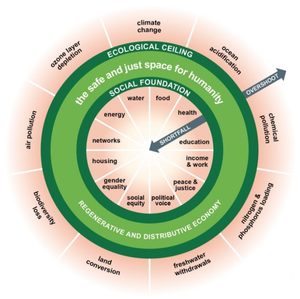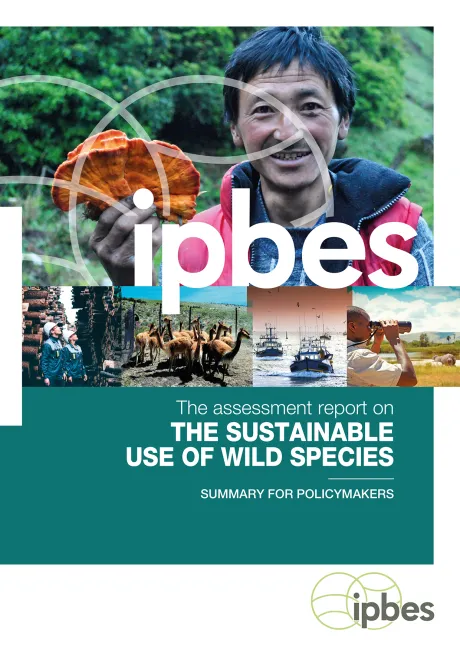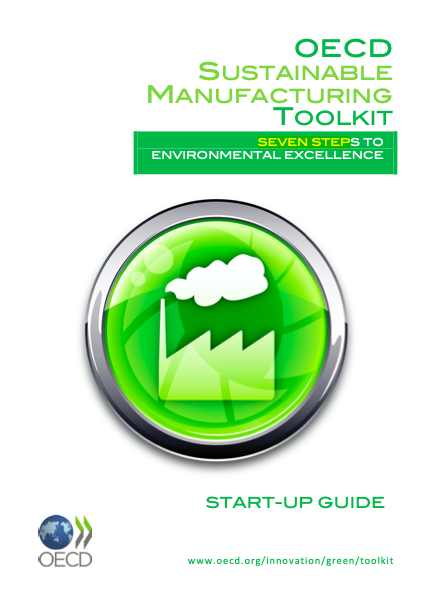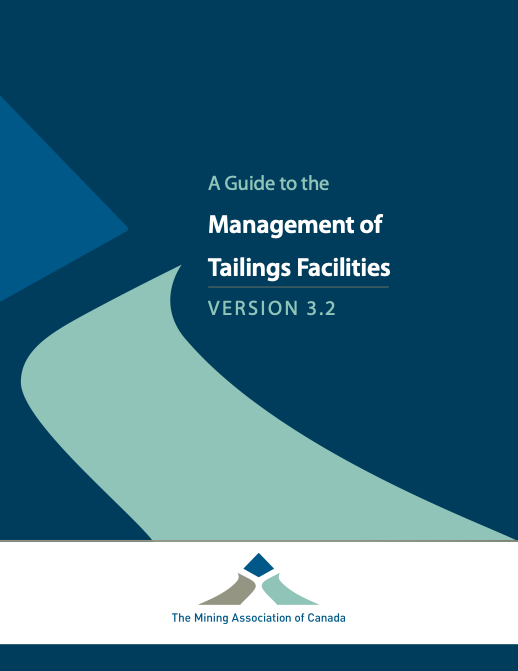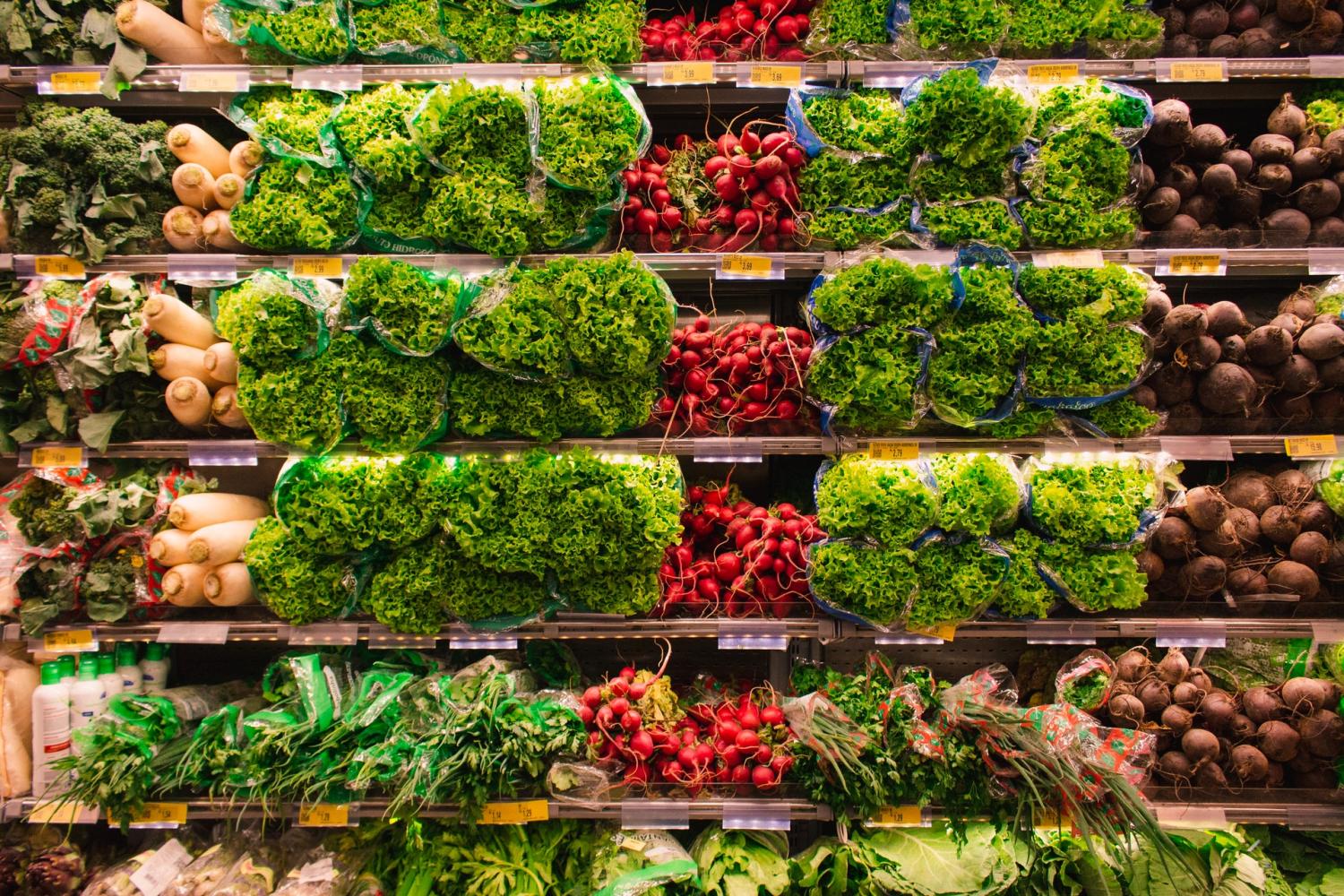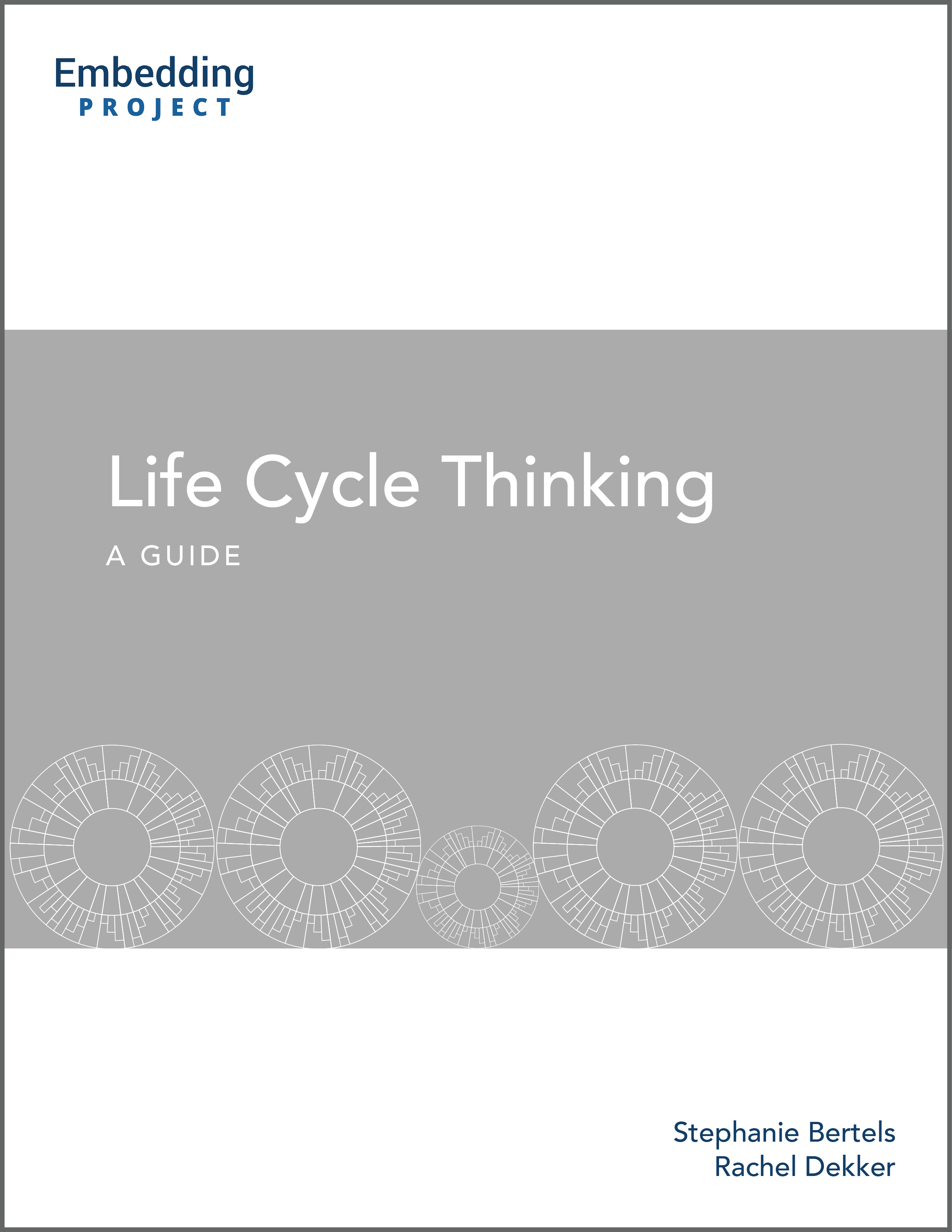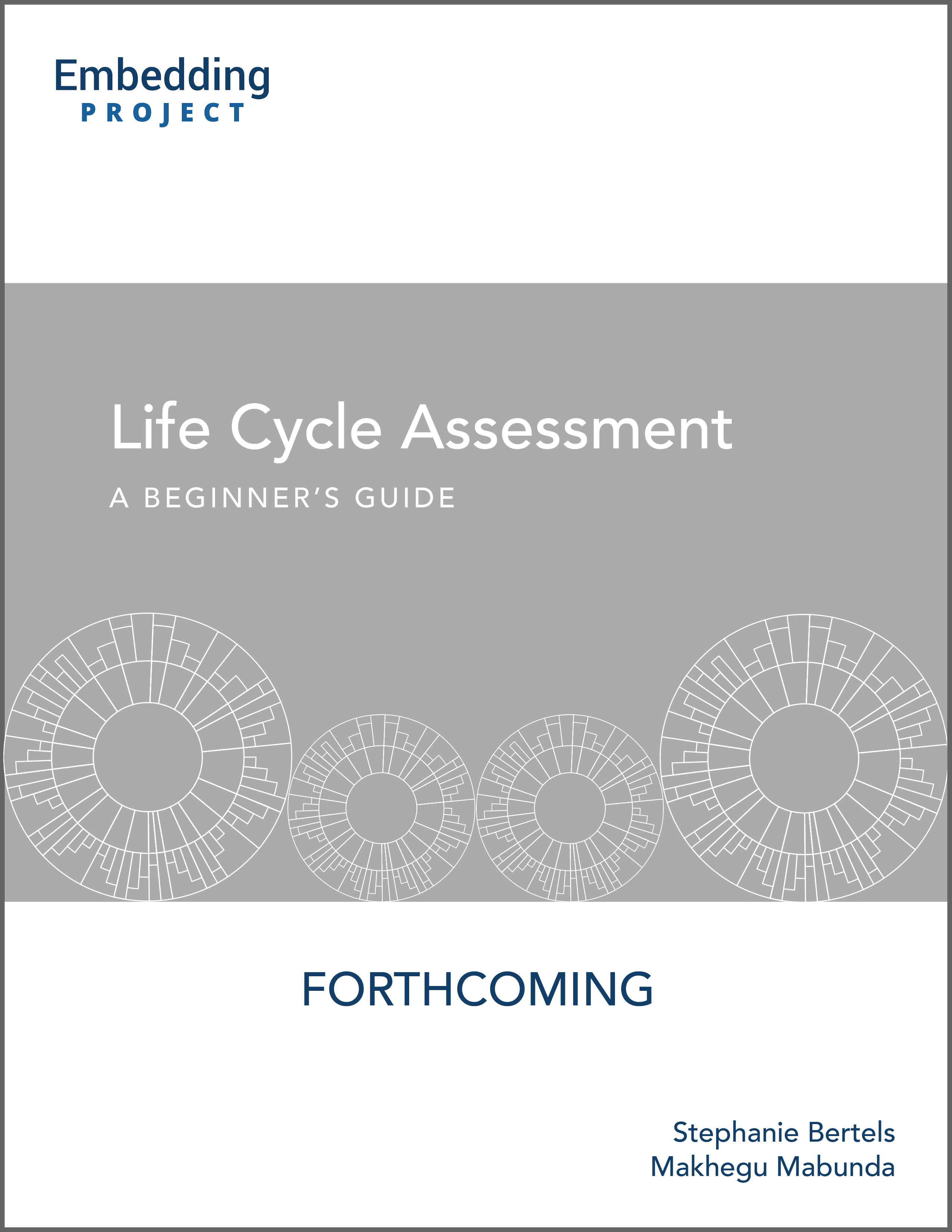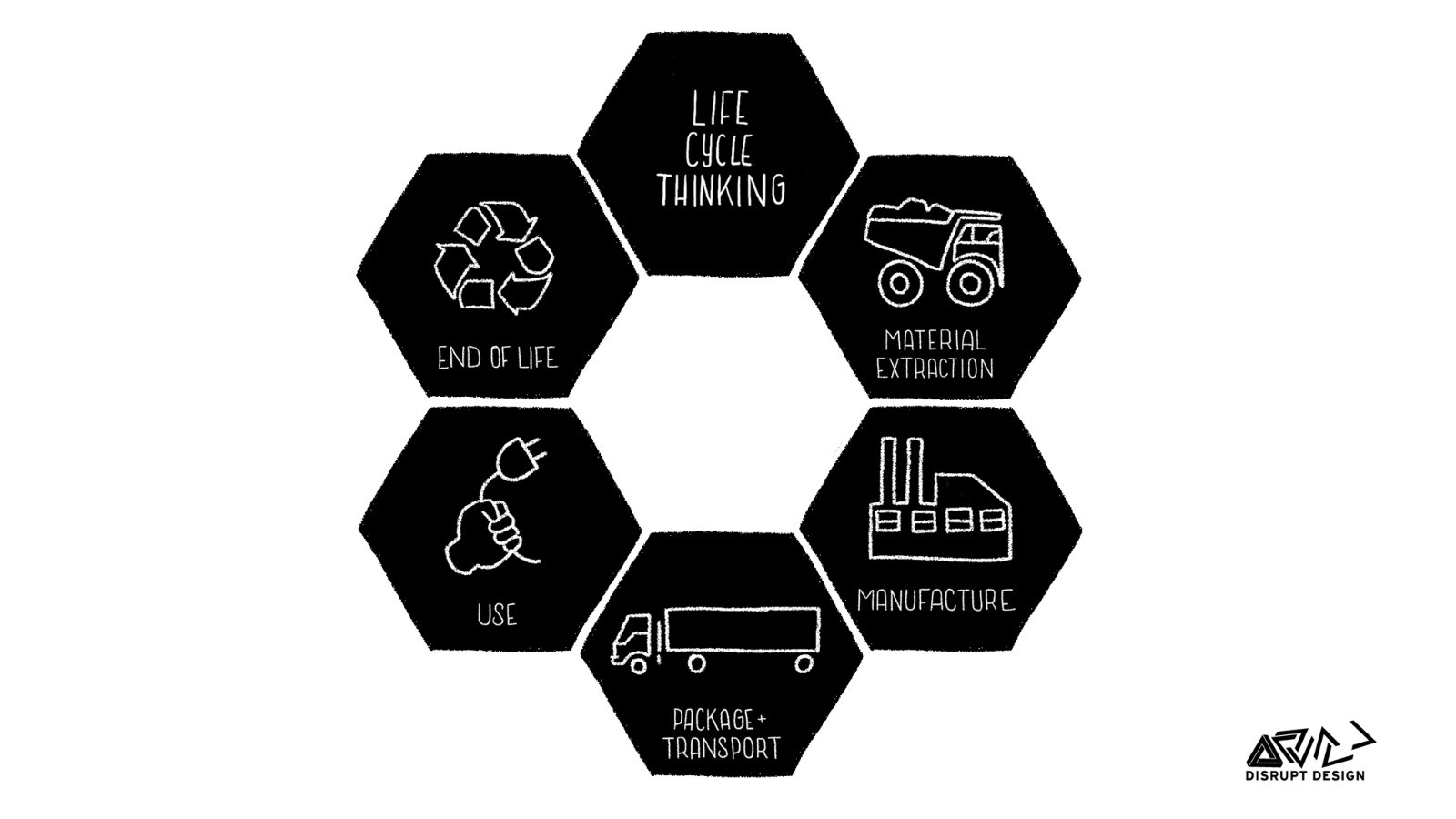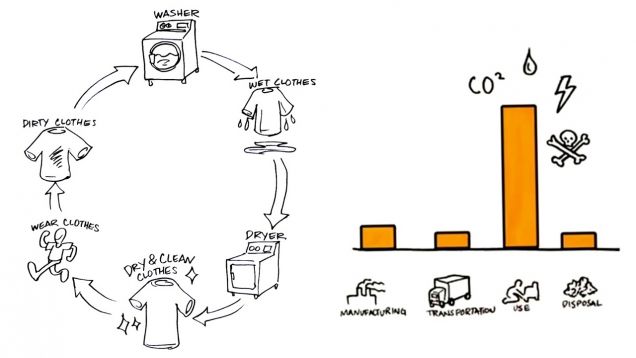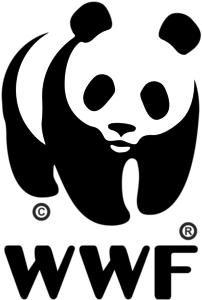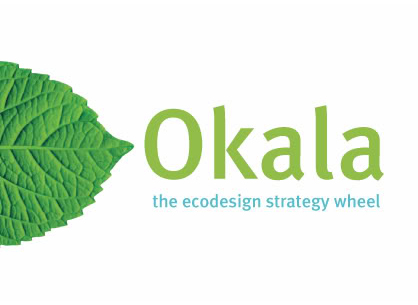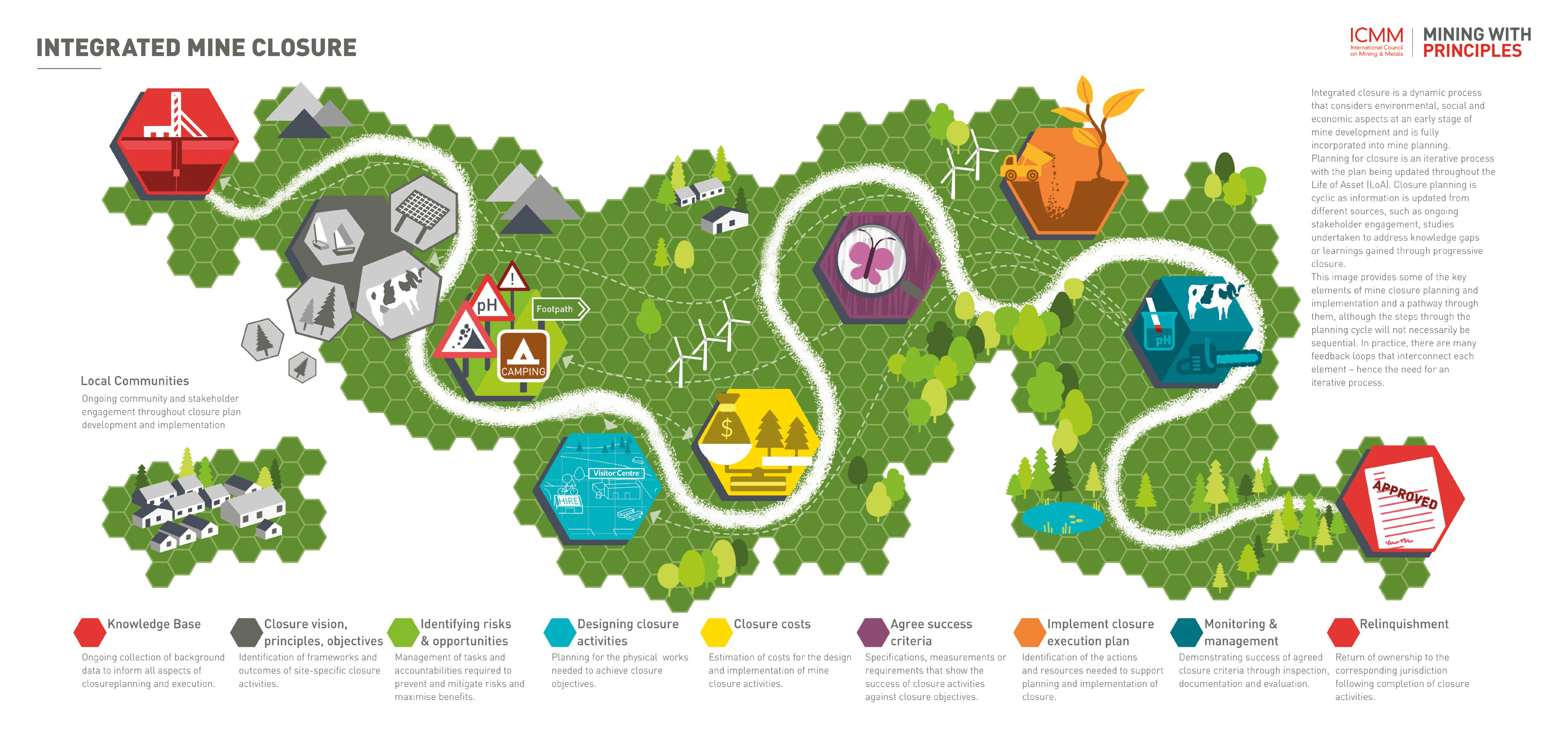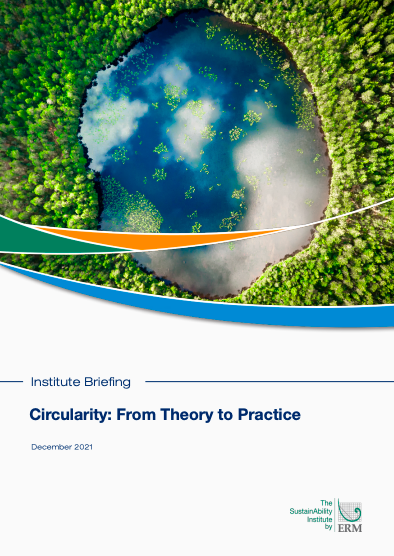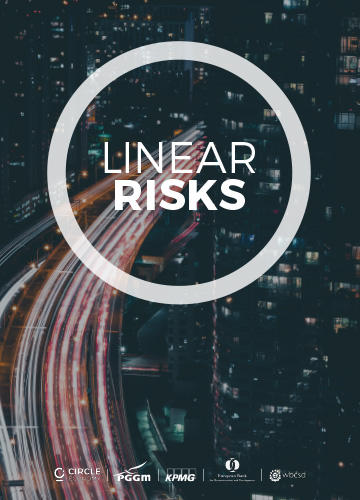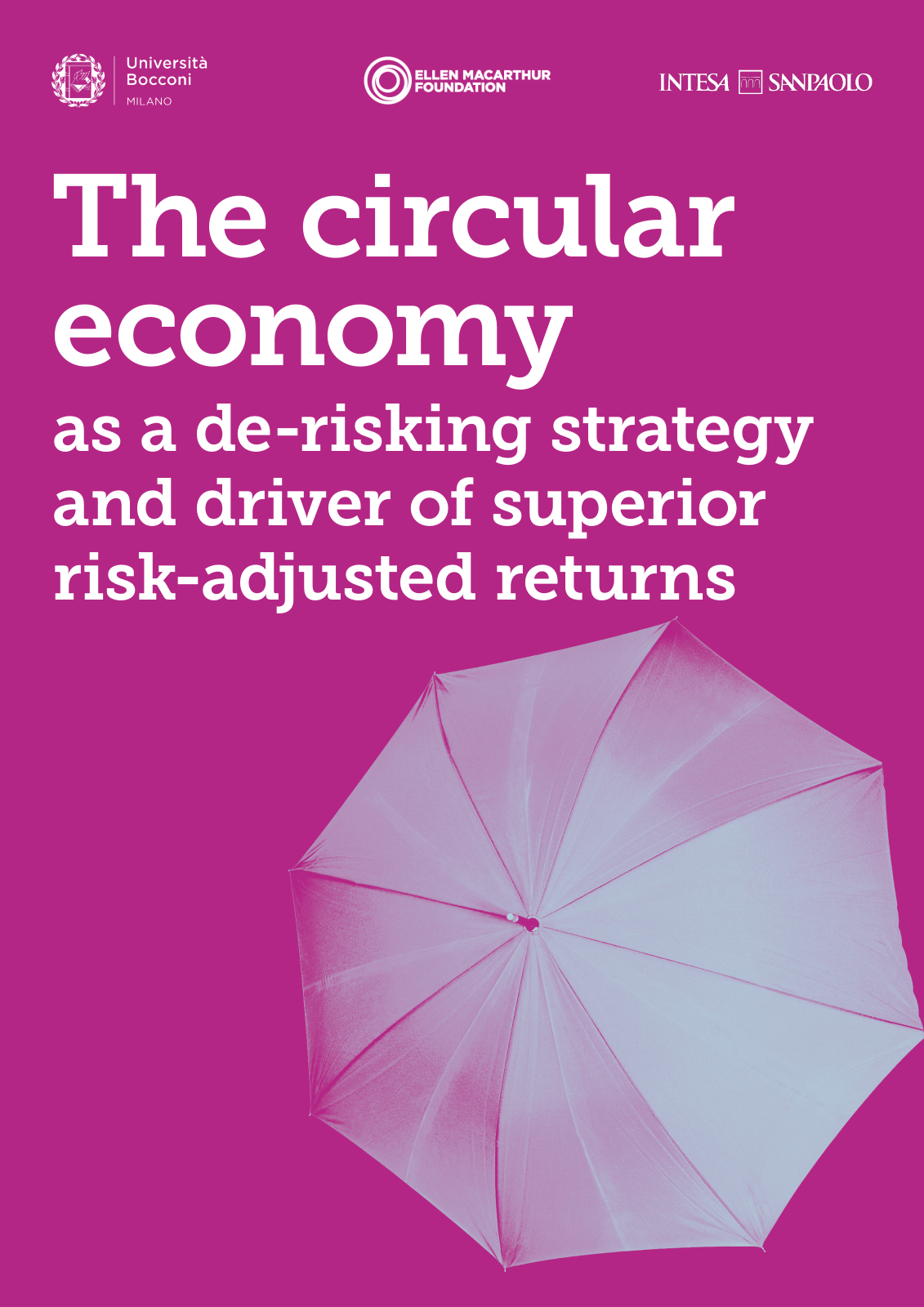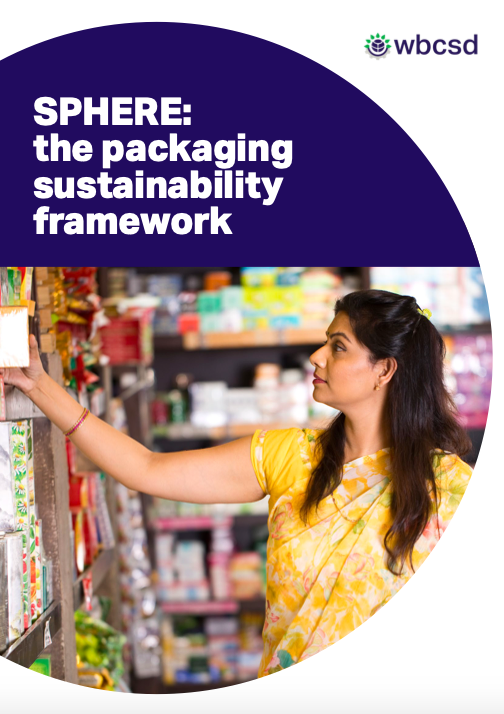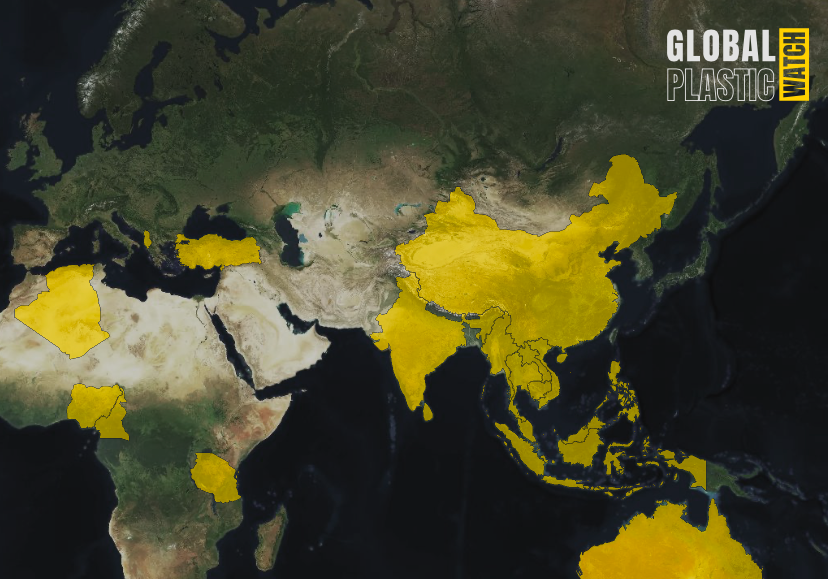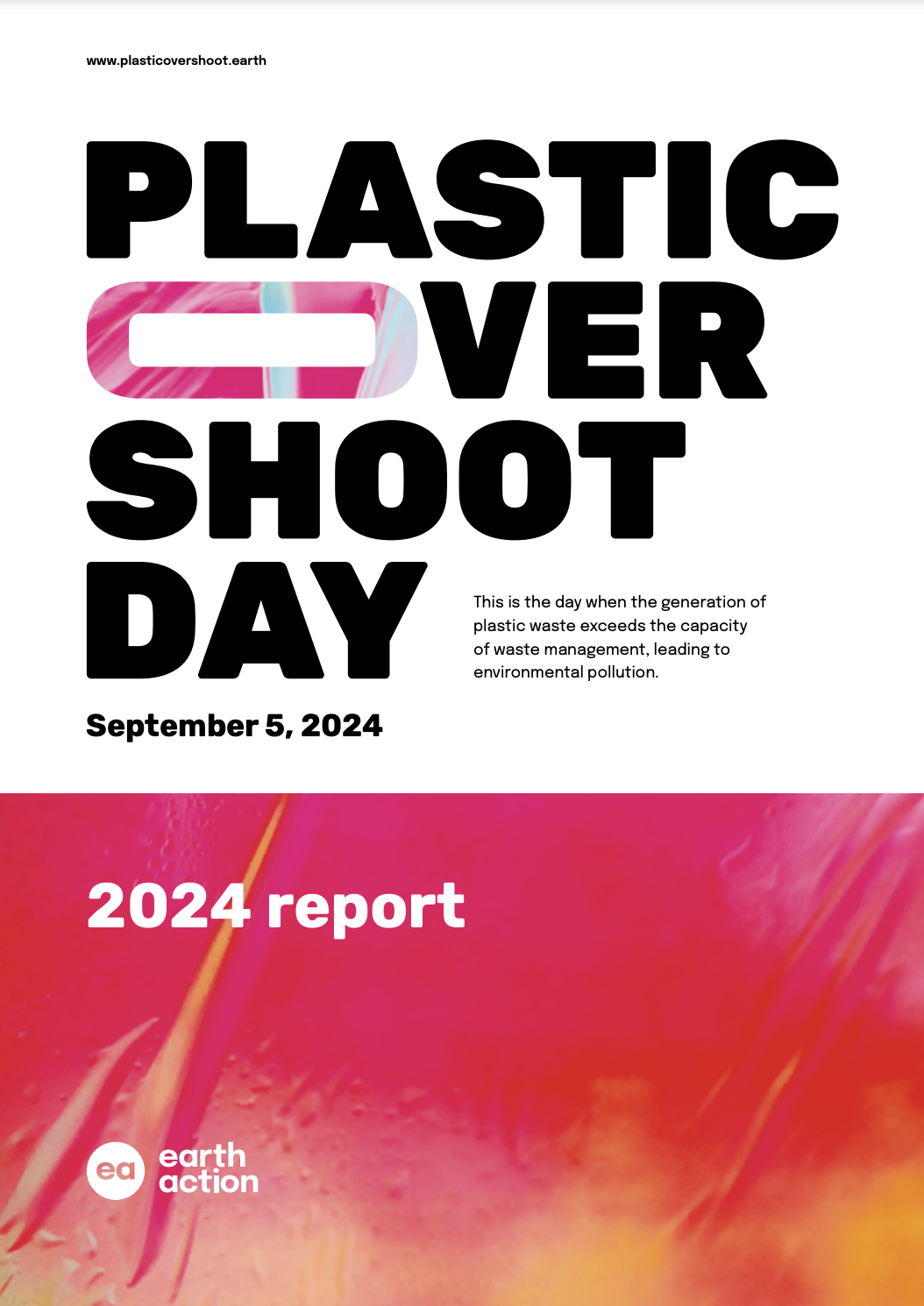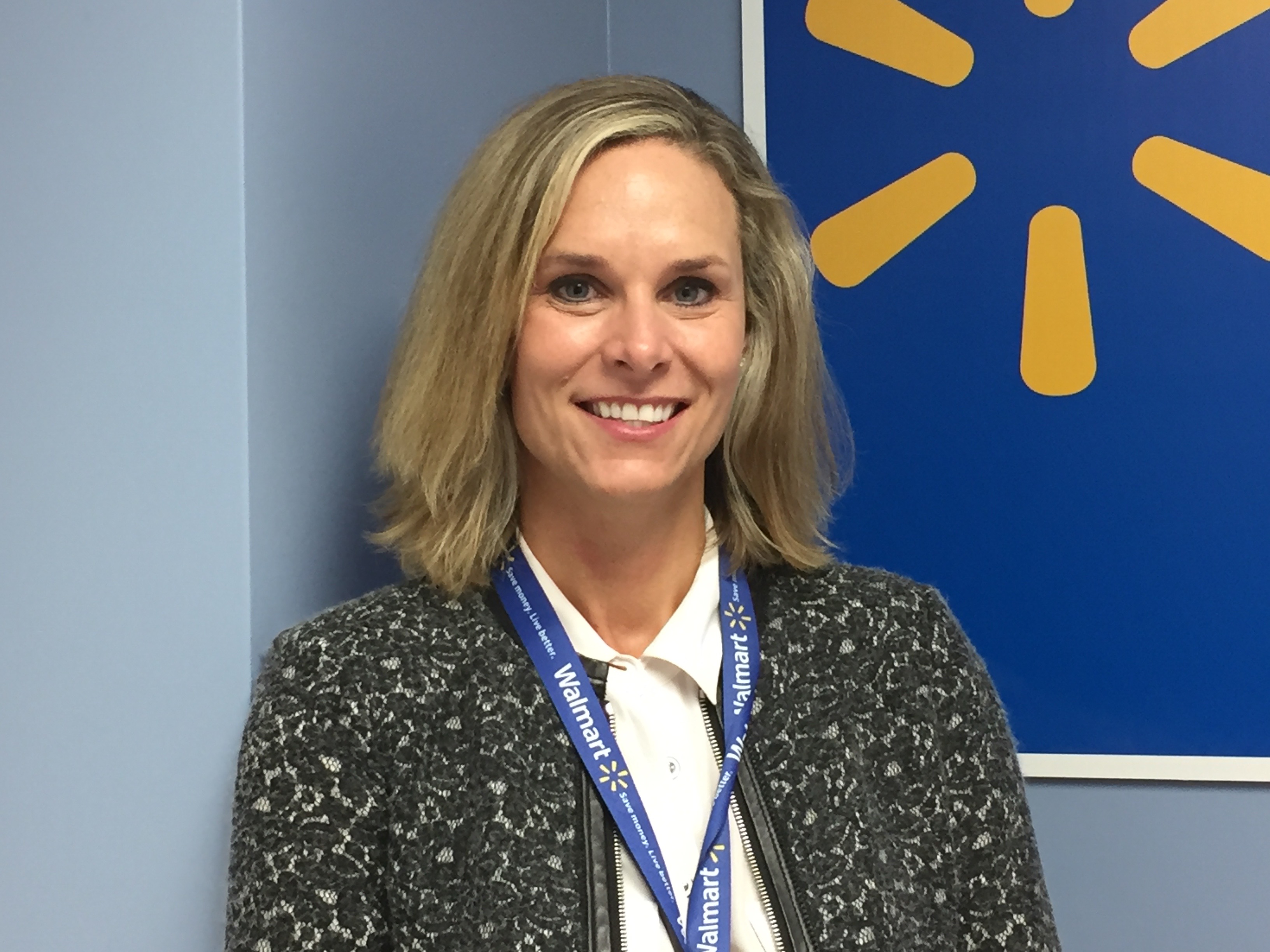Materials and Waste
Description
This includes the acknowledgement that the Earth's resources are finite, and that we must move away from a linear take-make-waste economy and towards a more thoughtful, regenerative economy that preserves the use and value of resources for as long as possible.
Share this Issue on:LinkedIn
Resources
The Social Foundation: 'A Safe and Just Place for Humanity'
Kate Raworth's “Doughnut” model is a key framework for understanding sustainability context. Building on the planetary boundaries framework as a 'ceiling', it adds social foundations as a 'floor' and underlines the need to operate in the space between. The social foundation is made up of 11 boundaries that draw attention to communities needing access to basic resources to fulfill their human needs. This access needs to be achieved in a way that does not place undue stress on the earth's resources. The framework is based on the premise that we should be striving to build and maintain social foundations while staying within planetary boundaries.
Global Resources Outlook 2024
This comprehensive resource from UNEP can help you to understand how resources are essential to achieving the Sustainable Development Goals and tackling the polycrisis. Building on more than 15 years of work by the International Resource Panel, including scientific assessments and inputs from countries, stakeholders in the field, and regional experts, the report illustrates how rising trends in global resource use have continued or accelerated, and maps out how demand for resources is expected to continue increasing in the coming decades. It explains why sustainable resource management is urgently needed, and highlights the transformative actions that the global community must immediately pursue. This resource will be beneficial to a wide spectrum of sustainability, procurement, and strategy professionals.
Global Material Resources Outlook to 2060: Economic Drivers and Environmental Consequences
This comprehensive report from the OECD presents global projections of materials use and their environmental consequences, providing a quantitative outlook to 2060 at the global, sectoral, and regional level. It explains the economic drivers determining the decoupling of economic growth and materials use; provides projections of economic baseline scenarios, economic drivers of materials use, primary materials use, and of recycling and secondary materials; and features case studies on demand and supply risks for specific materials. This report will be especially beneficial to sustainability and procurement professionals.
What a Waste 2.0: A Global Snapshot of Solid Waste Management to 2050
This comprehensive report from the World Bank features extensive data on global, regional, and urban trends on solid waste management, from technical and operational trends to environmental and social impacts. It estimates and projects waste generation to 2050, and provides information on waste generation, collection, treatment, and disposal; emerging regulations and technologies; citizen engagement; and more.
The database linked with this website also includes information on 200+ countries and economies, as well as more than 360 cities.
Global Waste Management Outlook
A joint effort between the United Nations Environment Programme and the International Waste Management Association, the Global Waste Management Outlook (GWMO) is an impartial, in-depth assessment of global waste management. The GWMO evaluates the potential that superior waste management can provide industries and communities in meeting future sustainability challenges. This resource draws upon scientific knowledge and the work of leading experts to provide information on trends, analysis of governance and financial mechanisms, and policy advice, and features tools for taking a holistic approach towards waste management. The GWMO also sets forth Global Waste Management Goals and a Global Call for Action. These complement the SDGs, and can support your company in recognising waste and resource management as significant contributors to sustainable development, resilient communities, and climate change mitigation.
Zero Waste International Alliance
Established in the early 2000s, the Zero Waste International Alliance (ZWIA) promotes positive alternatives to dumping, landfills, and incineration, and raises awareness of the benefits of viewing waste as a resource that can benefit business. Operating at the international, national, and local level, the ZWIA provides definitions and standards for the application of zero waste goals and initiatives; facilitate research and information-sharing; build capacity to effectively implement zero waste; and connect change agents with leaders in the field to help achieve zero waste outcomes.
International Solid Waste Association
The ISWA is an independent, non-governmental, non-profit association that promotes and develops professional waste management worldwide. ISWA issues publications on waste management and related research; raises awareness of global waste emergencies; and offers education training programs, information development, and technical assistance at the global level.
The Higg Index
This is an open-source set of assessment tools from the Sustainable Apparel Coalition developed for apparel and footwear companies to assess the sustainability of their value chain. It is intended to enable companies to standardize how they assess their sustainability performance.
GRI 306: Waste
The GRI Standards enable organisations of all sizes to better understand and report on their impacts on the economy, the environment, and peoples, and in comparable and credible ways. GRI 306 can help you to disclose information on how your organisation prevents waste generation and how it manages waste that cannot be prevented, both within your operations and across your value chain.
The Supply Chain Solutions Center
Launched by the Environmental Defense Fund, the Supply Chain Solutions Center is a “crowdsourced” knowledge resource hub. The library’s current focus is on agriculture, energy, chemicals, waste, forests, and freight, and provides sustainability resources, best practices, case studies, reports, executive interviews, strategy templates, webcasts, and news that will support you in learning about these issues, assessing risk, setting goals, measuring, and reporting. The Solutions Center also brings together sustainability and supply chain professionals, creating a space where platform users can connect and collaborate with other experts.
The IPBES Assessment Report on the Sustainable Use of Wild Species
Billions of people benefit daily from the use of wild species for food, energy, materials, medicine, recreation, inspiration, and more. 50,000 wild species meet the needs of billions of people worldwide, and more than 10,000 wild species are directly harvested for food. This report by the Intergovernmental Science-Policy Platform on Biodiversity and Ecosystem Services (IPBES) can help you to understand how the global biodiversity crisis threatens the contributions of these species to humanity, and provides insights, analysis, and tools to establish more sustainable use of wild species of plants, animals, fungi and algae around the world.
This report identifies five broad categories of ‘practices’ in the use of wild species: fishing; gathering; logging; terrestrial animal harvesting (including hunting); and non-extractive practices, such as observing. For each practice, it then examines specific ‘uses’ for these materials; identifies trends and drivers of change; explores policies, practices, and tools to effect positive change; and examines a range of possible future scenarios for the use of wild species.
OECD Sustainable Manufacturing Toolkit
This toolkit is a good starting point for small- and medium-sized enterprises that want to improve the sustainability of their manufacturing operations. The toolkit has two parts: a guide, which introduces a seven-step framework that can help you to understand, measure, and improve your environmental performance, and a web portal that offers technical guidance on measurement and other relevant resources.
Global Forest Watch
This online platform provides data and tools for monitoring forests, and will help you to access near real-time information about where and how forests are changing around the world. The maps features allow you to visualise and analyse historical trends in tree cover loss and gain since 2000, view land cover, and toggle for various country-specific climate and biodiversity factors. This tool may be particularly helpful to sustainability, oversight, and procurement professionals who are responsible for monitoring illegal deforestation, defending land and resources, and ensuring commodities are sustainably sourced.
Tackling Plastic Pollution: A pioneering methodology to measure plastic leakage and identify its pathways into the environment
This comprehensive publication provides the first science-based methodology to map and measure plastic leakage across corporate value chains. Part of the Plastic Leak Project, this document will provide sustainability managers and corporate decision-makers with a framework for understanding where (and how much) leakage is occurring, and will help you to create impactful strategies and actions that effectively address plastic pollution and mitigate key business risks. Also available is a Plastic Leak Project Brief, which provides decision-makers with an overview of the guidelines, a summary of the challenges they help address, the business value of this metrics-based approach to building a plastics strategy, and more.
Transparent 2023 Annual ReSource: Plastic Progress Report
This annual report from ReSource: Plastic and WWF provides an update on how member companies are addressing plastic pollution and identifying new opportunities to maximise positive impact. In addition to highlighting results and progress, this report provides recommendations for action both internal to company supply chains and across wider multi-stakeholder efforts. This is a good source of information for change agents that want to learn about the efforts of multinational corporate leaders in reducing their plastic waste.
The Plastic Waste Makers Index
This groundbreaking report from the Minderoo Foundation reveals the perpetrators and enablers of the plastic waste crisis, and highlights both the trajectory of this issue and the impacts it will have on peoples and the environment. This report can help you to understand which companies are driving this crisis; which companies are making real efforts to create a circular plastics economy; and how virgin polymer production is expected to grow or decline in the future.
A Guide to the Management of Tailings Facilities
Produced by the Mining Association of Canada (MAC), this guide will help you to develop and implement consistent site-specific tailings management systems, and especially at new facilities. Designed to be applicable by mining facilities anywhere in the world, this guide provides a broadly applicable tailings management framework and a detailed planning rubric.
Global Industry Standard on Tailings Management
The Global Industry Standard on Tailings Management was developed by ICMM to prevent catastrophic failure, enhance the safety of mine tailings facilities around the globe, and achieve the goal of zero harm to people and the environment. The Standard applies to current and future tailings facilities, and is comprised of six topic areas, 15 principles, and 77 auditable requirements that can be supported by implementation protocols.
E-Waste Monitor
E-waste is one of the fastest growing waste streams. This platform from the United Nations Institute for Training and Research (UNITAR) can help you understand the scale and flows of e-waste around the world. It features global monitoring reports that provide an overview of e-waste statistics, relevant legislation, potential solutions, and health impacts. It also hosts a selection of regional- and national-level reports, future e-waste scenarios, and additional statistics. The data provided will be most useful to sustainability and supply chain management teams seeking to address e-waste challenges in their operations and value chain.
The Avoidable Crisis of Food Waste: The Roadmap
This resource from Second Harvest explains how nearly 9 million metric tonnes of food is lost or wasted by the food industry in Canada each year. The report uses field-to-fork life cycle analysis to show how - and why - food loss and waste occur. This is a good starting point for building awareness around the magnitude of food waste, regardless of geographic context; for understanding the differences between avoidable and unavoidable waste; and for understanding the kinds of immediate and long-term solutions that should be pursued to reduce food loss and food waste.
Wasted Opportunity: Rescuing Surplus Food in a Throwaway Culture
This report from Second Harvest explores food loss and waste across the industrial spectrum in Canada. It can help you to understand the causes and scale of the problem, the implications and opportunities for communities and business, and solutions for positive change that can be amplified.
Although the information here is centred around the Canadian context, many of the recommendations and insights are applicable regardless of geography.
Four Strategies Businesses Can Deploy to Slash Food Waste
If your business is looking for new ways to reduce food waste, this article from Triple Pundit highlights four changes that can help to reduce efficiencies and loss: AI-enhanced inventory management, digital food recovery platforms, smarter packaging, and upcycling food byproducts.
Life Cycle Thinking
This guide explains how life cycle thinking and mapping help you identify and better understand the potential impacts of your products and services on people and the environment. By exploring environmental and social impacts from your raw materials, through manufacturing and distribution, to customer use, and end of life, you can identify hot spots and leverage points to take action on.
Life Cycle Assessment
Our forthcoming guide on life cycle assessments help you understand the social and environmental impacts of your products or services. This guide explains what a life cycle assessment is, why your business might want to undertake one and what to know about the process before you reach out to an LCA consultant.
To be notified when this guide is released, sign-up for our monthly newsletter or follow us on LinkedIn.
A Guide to Lifecycle Thinking
This guide from Leyla Acaroglu, editor of Disruptive Design, provides an introduction to lifecycle thinking, identifies lifecycle stages and key components for analysis, and explains how to apply this approach within your own organization. Leyla also provides helpful tools and tips to get you started.
Whole Systems and Lifecycle Thinking
This short clip provides a great introduction to applying whole systems and lifecycle thinking to a product using the example of a clothes dryer. It was developed as a part of the Autodesk Education Community's Sustainability Workshop. The page also has a slide deck and video script, as well as links to information on Life Cycle Assessment, The Rocky Mountain Institute's 10xE design principles, and biomimicry.
Handbook for Product Social Impact Assessment
This comprehensive handbook outlines a method for analyzing the social impacts of a product across its entire life cycle. It presents a number of indicators you can use to make impacts more visible and potentially identify hotspots, risks, and opportunities for improvement. It was developed by The Roundtable for Product Social Metrics, a business-led working group that works in collaboration with academia, NGOs, government, and industry organisations.
Extended Producer Responsibility (EPR) Fact Sheet
Is your company ready to take the first step in managing its end-of-life packaging? If so, this short primer from WWF will help to acquaint you with the basics of extended producer responsibility (EPR). This document highlights the benefits of EPR, and provides a high-level overview of the roles and responsibilities of stakeholders in the EPR system.
Okala EcoDesign Wheel App
This "brainstorming tool" is a great prompt for early thinking on improving the sustainability of a product or service. Taken from the Okala Practitioner Guide, it organises different strategies for minimizing ecological impact around the stages of the product life-cycle.
Integrated Mine Closure: Good Practice Guide
Developed by ICMM, this guide provides examples of good practices and a range of tools that can be used to make well-considered decisions when planning for the final lifecycle stages of a mine. This guide builds on the Planning for Integrated Mine Closure: Toolkit, and is an invaluable resource for personnel responsible for mine management and financial oversight. Among other helpful insights, this guide articulates closure vision, principles, and objectives; the implementation of progressive closure activities; and planning for social transition to help reduce the impact of closure on workers and the community, among other insights.
World Food LCA Database
The World Food LCA Database is a comprehensive, international Life Cycle Inventory database and global initiative led by Quantis in partnership with leaders in the agri-food sector. This database will help you to evaluate the lifecycle and better plan for resource constraints and higher resource costs by providing transparent and consistent data for agricultural and food products based on the best science available.
What is the Circular Economy?
The Ellen MacArthur Foundation provides a range of videos, audio files, case studies, and slides that can help you to understand the limitations of our linear economy, the aspects and benefits of a circular approach to industry, and the principles that can enable businesses and communities to achieve a more sustainable economy.
Circular Innovation Council: Circular Procurement
This platform was created by the Circular Innovation Council to support Canada’s collective understanding of the circular economy and how purchasing advances it. It showcases a broad range of resources that may be especially helpful for sustainability practitioners and leaders working in Canada, such as case studies from a variety of sectors and industries; guidance and best practices; policies and frameworks; and purchasing tools.
Although created for the Canadian context, many of the learning materials here provide lessons and insights that are equally applicable elsewhere.
Circularity: From Theory to Practice
Circular business practices need to be embedded into business strategy in order to be sustainable. This briefing from the SustainAbility Institute can help you with the early stages of developing a circular economy strategy that aligns with your business strategy. It identifies four steps that can help you to kickstart your company's pursuit eliminating waste and maximising the reuse of resources: identify drivers and goals, determine focal points, develop an action plan, and execute.
The Circularity Gap Reporting Initiative
The Circularity Gap Reporting Initiative measures current states of circularity and provides annual findings on the global state of transition based on the latest scientific evidence. They also provide insights into the circularity gap of individual countries, regions, and sectors.
Their flagship report, the Global Circularity Gap Report, provides a yearly update on the state of global circularity and identifies key levers for advancing circularity. This resource can help bring you up to speed on resource use and provides an abundance of compelling numerics that highlight the need for - and pace of - systems change.
Linear Risks
There is growing pressure on the availability of resources, and our current "take-make-waste" approach does not focus on preserving the value and utility of resources to relieve this pressure. This short essay from WBCSD will help you understand the need for transitioning to a circular economy by defining linear risks and highlighting their wider impacts on business, communities, and the environment. Also included is a linear risk matrix with links to material, real-word examples of consequences for business.
CTI Tool
This free tool was developed to help businesses accelerate their transition towards a circular economy. Using a simple, objective, quantitative framework, the CTI Tool structures data, calculates outcomes, and generates reports, enabling you to improve your understanding of circularity and set mor ambitious targets.
Circular Transition Indicators V4.0 – Metrics for business, by business
The momentum to step away from the linear take-make-waste economic model is growing, and transparency and alignment are crucial to establishing a common language across industries and governments. The Circular Transition Indicators (CTI) was created to address this gap. This resource introduces an objective and quantitative framework that can support businesses of all industries, sizes, value chain positions, and geographies to measure and communicate their circularity in a consistent way.
This guide is divided into two parts. The first part explains the CTI framework and methodology; highlights the need for circular metrics and the use of CTI; explains the CTI process cycle; and explains how to get started. The second part is the CTI User manual, which outlines seven process steps for performing an assessment.
The circular economy as a de-risking strategy and driver of superior risk-adjusted returns
If you are looking for resources that will help you to build a business case for pursuing circular economy strategies, this resource is a good place to start. This white paper explains how circular economy strategies can reduce the risk of investments and drive superior risk-adjusted returns for investors and financial institutions. By decoupling economic growth from resource consumption, diversifying business models, and allowing your business to better anticipate stricter regulations and customer behaviour, circular economy principles can reduce exposure to supply chain disruptions, resource price volatility, and more.
Climate Governance and the Circular Economy: A Primer for Boards
This primer from the Climate Governance Initiative and the World Economic Forum was created to provide board directors with a practical understanding of the circular economy and how circular business models can be applied to achieve climate and environmental commitments. It unpacks the concept of a circular economy, explains the ways it can benefit businesses, and outlines how to get started. It also highlights emerging circular economy measurement and disclosure frameworks that can help you to monitor progress.
The Circular Economy: What Every MBA Needs to Know
This primer provides a helpful high-level summary of the circular economy that will benefit executives, board members, and other business leaders. It explains the issue of linear, take-make-waste models of modern economies; highlights the business risks of inaction, such as shifting consumer demands, regulatory changes, and supply chain disruptions; and highlights a broad range of opportunities for circular economy adherents.
Circular Buildings Toolkit
This toolkit can help owners, investors, and developers to better align their portfolios with sustainability regulations and laws and move beyond. Developed in partnership between the Ellen Macarthur Foundation and Arup, it was created to minimise building waste, keep products and materials in use for longer, and reduce emissions, and all from the start of the building design process. The toolkit features a circular design framework that includes an array of strategies and actions for relevant real estate projects, as well as a library of case studies.
The Plastic Leak Project Guidelines
This comprehensive guide provides a science-based methodology that can help you to map and measure plastic leakage across your value chain. It features a framework for understanding where leaks are occurring and assessing their significance, and provides a foundation for creating strategies and implementing actions that effectively address plastic pollution.
Turning off the Tap: How the world can end plastic pollution and create a circular economy
This comprehensive report from the UN Environment Programme examines the economic and business models needed to address the impacts of the plastics economy. The report is divided into four parts, highlighting the case for ending plastic pollution and pursuing a better plastics future; the need and pathways for a marketplace transformation to create a new circular plastics economy; the legacy of plastic waste and pollution; and the changes in policy and legislation required to credibly address the global plastics problem. This resource can help you to understand that these solutions are available now, and that a systems change will result in a wide range of economic benefits while also reducing the harm to human health and the environment. This roadmap will be especially beneficial for sustainability practitioners, procurement specialists, designers, and policy leads that want to better understand their role in the transition to a circular economy.
Plastic & Climate: The Hidden Costs of a Plastic Planet
This report is a good deep-dive for business leaders, sustainability change agents, and packaging and procurement professionals who want to learn more about the impact of plastics on greenhouse gas emissions, global carbon budgets, and emissions-related commitments. The report examines the emissions from each stage in the plastic life-cycle, as well as uncertainties that can result in underestimating the impacts of plastic on the atmosphere. It also uses data - such as downstream emissions and future growth rates - to consider how current trends and projections will impact our ability to reach agreed emissions targets.
Global Plastic Laws
This platform, a collaborative project managed by the Plastic Pollution Coalition, can help your sustainability and legal teams understand the current state of plastic regulations around the world. It includes a geographic map that allows you to view plastic laws by country, and includes a resource library that compiles relevant news, guides, notable legislation, and more.
SPHERE: the packaging sustainability framework
This resource from WBCSD can help you to take a more rigorous approach to implementing sustainable packaging solutions, either at the company-level or for a specific product. The framework provides a holistic definition of packaging sustainability that is founded on six guiding principles: minimise the drivers of climate change; optimise efficiency; optimise circularity; optimise end of life design; avoid harmful substances; and minimise the drivers of biodiversity loss. The framework then introduces a four-step approach that supports users with scoping their assessments, selecting methodologies, and setting thresholds.
Global Plastics Outlook: Economic Drivers, Environmental Impacts, and Policy Options
This resource from the OECD is the first report to comprehensively take stock of current plastics production, use, and waste generation; uncover the underlying economic drivers; and map the related environmental impacts on a global level. The report provides information on a range of essential and related topics, including plastics flows, their impacts on the environment, and key levers for bending the curve on plastics, such as secondary plastics markets, innovation on plastics, domestic policy measures, and international cooperation and collaboration.
Although intended for policymakers, this report can help you to understand the need for a whole of life-cycle approach and better assess (and thus support) policies that advance the sustainable and circular management of plastic materials.
Enabling corporate plastics disclosure: Building a corporate accountability system for plastic pollution
This white paper from WBSCD proposes an accountability system that can help your company comply with future regulation on plastic pollution. The system features four stages: 1) setting a goal for the transition to circular economy, 2) create a plastic pollution action plan, 3) using accurate plastic pollution accounting metrics, and 4) reporting on these the metrics externally. This paper would be most helpful for sustainability change agents and compliance professionals.
Towards Ending Plastic Pollution by 2040: 15 Global Policy Interventions for Systems Change
This report from Systemiq can help you understand the scale of intervention required to address the impact of plastic pollution. It presents two scenarios: "Business-as-Usual," based on our current trajectory of plastic pollution, and “Global Rules,” which explores what plastic pollution may look like in 2040 if a global set of far-reaching policy interventions are adopted. The report estimates the environmental, social, and economic benefits of these interventions. These insights will be most useful to sustainability and public affairs teams interested in pushing for policy advocacy on plastic pollution.
Global Plastic Watch
This digital platform maps and monitors plastic pollution in near-real-time through satellite imagery and artificial intelligence. This tool can help you to make evidence-based decisions on how to support global efforts to manage and mitigate plastic pollution.
Plastic Overshoot Day 2024 Report
This comprehensive report from Earth Action can help you to better understand (and communicate) the scale of the plastic pollution crisis, including the contributions of individual nations. The report provides a high level summary of plastic pollution trends globally; highlights how improvements in waste management are being outpaced by patterns in plastic production and disposal; and fills key knowledge gaps related to micro- and macro-plastic leakage.
Plastic-Free Packaging Design Guide
This guide from Google can help you to transition towards plastic-free packaging. It features insights from Google's design, engineering, and operations efforts to create plastic-free packaging that is more easily recycled. The guide highlights the key challenges of moving away from plastic packaging and provides comprehensive information on replacements that Google has developed and implemented. This resource would be of particular benefit to sustainability and R&D professionals.
From Scorecard to Playbook: Walmart’s Packaging Evolution
In this interview, Laura Phillips - Walmart's SVP of Sustainability - explains how Walmart transitioned from its iconic packaging scorecard (Sustainable Packaging Scorecard) to a Sustainability Index (Sustainable Packaging Playbook). The new index uses priority KPIs to measure the impact of Walmart's supply chain. In this Q&A, Philips demonstrates how companies can drive operational efficiency by establishing KPIs and life-cycle assessments for individual products.
